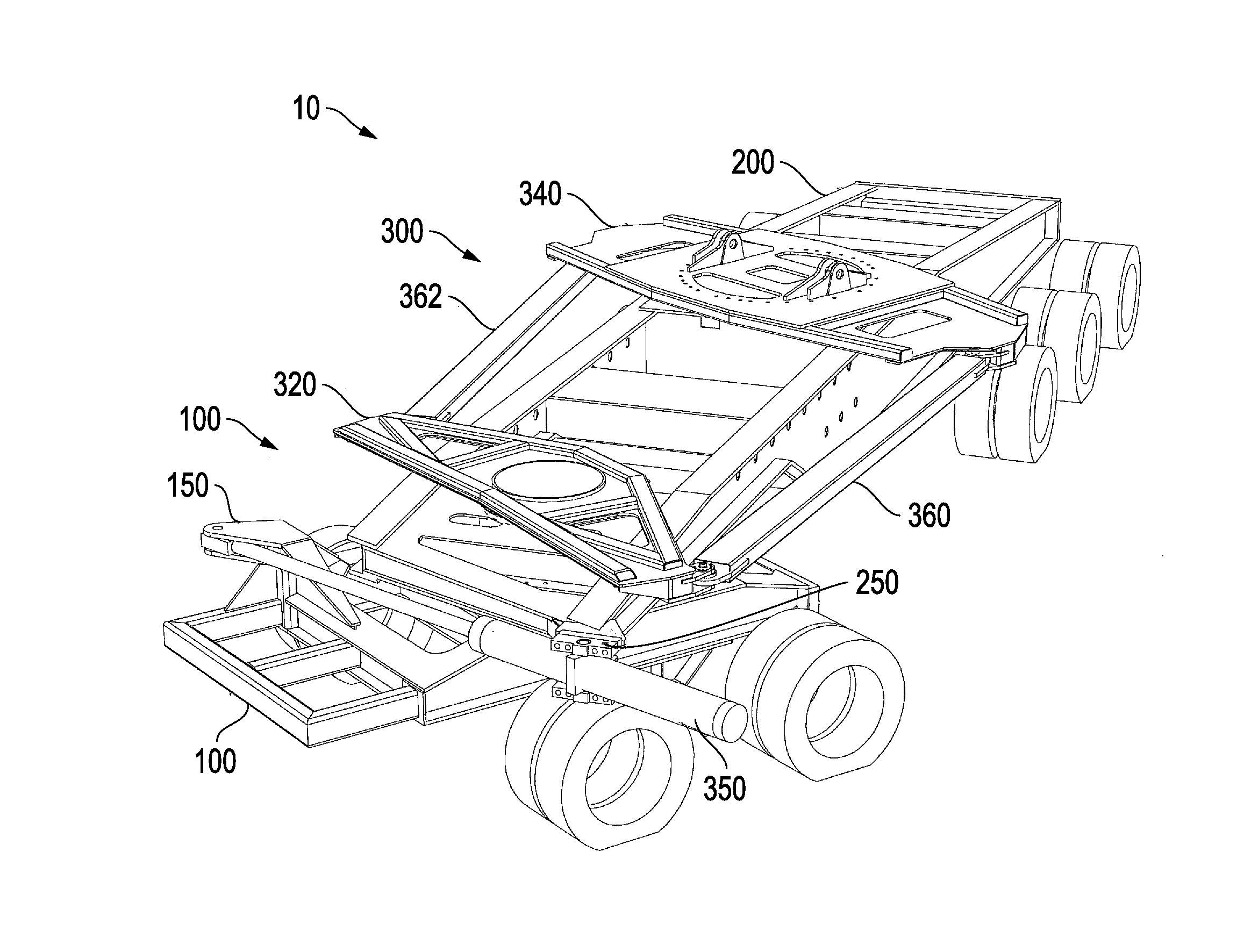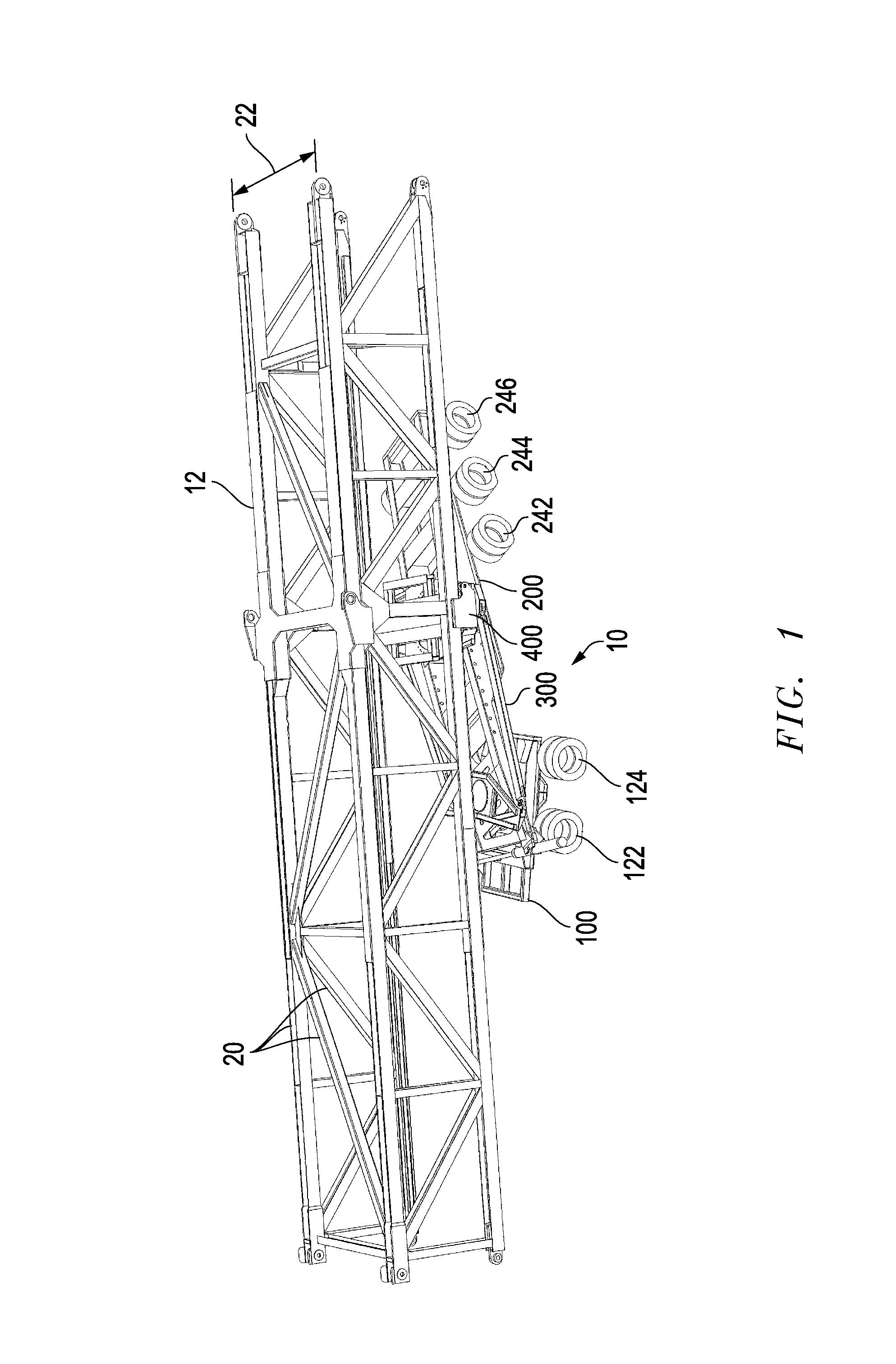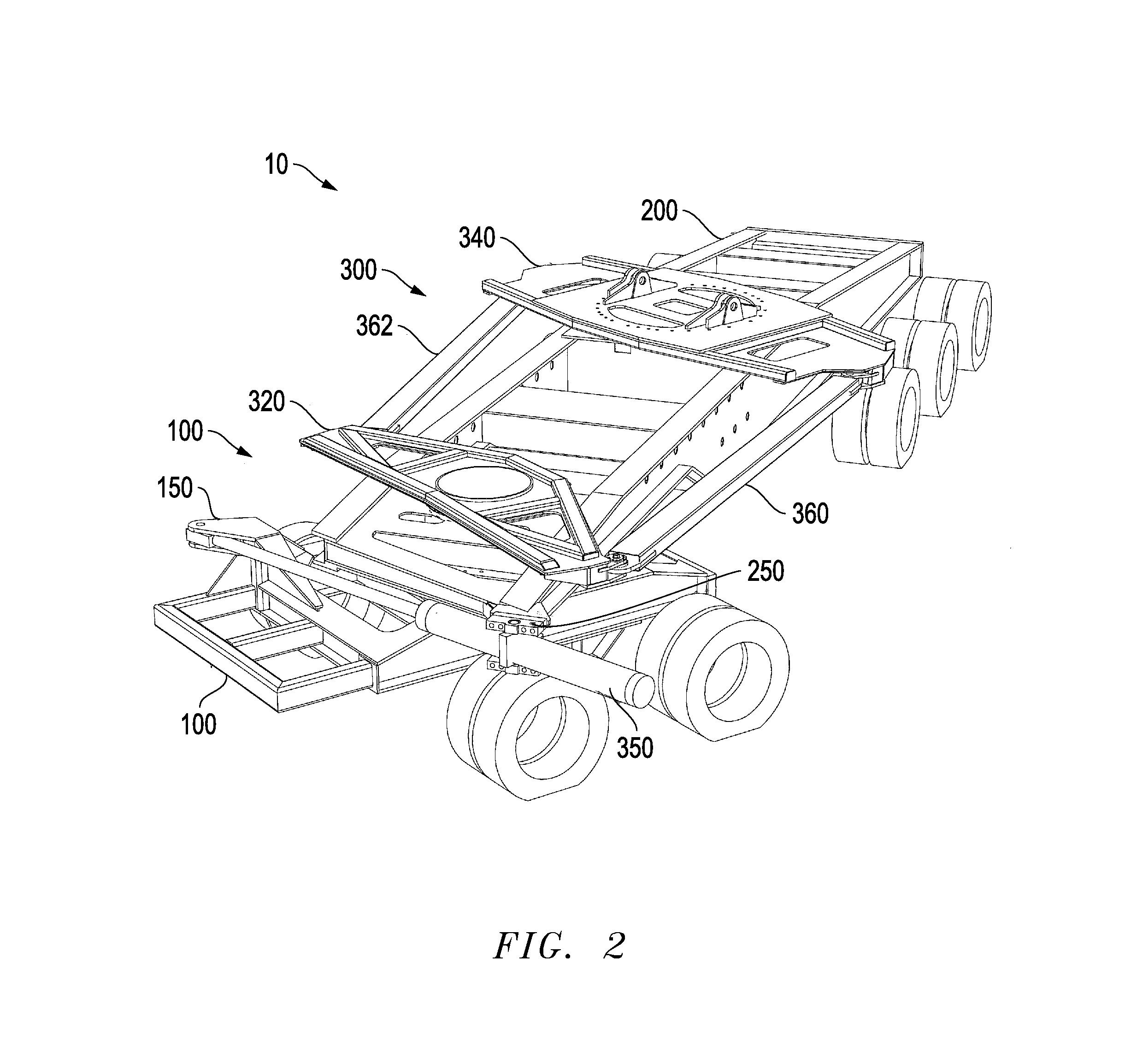These locations are often remotely located and in rough
terrain.
The dolly systems must follow the
tractor in a precise manner or the load will become unstable and dangerous.
Safety is a paramount issue.
Consistent with the safety issue and the high cost of
downtime during transportation is reliability of the system.
Breakdowns can be both dangerous and costly if the drilling rig is unavailable.
Fox, however, uses hydraulic components, rather than a simple to implement mechanical linkage steering system, and does not provide for
direct control of the dolly with redundant links.
As a result, the apparatus of Fox requires more components at the cost of increased weight and complexity.
Due to the inclusion of hydraulic assemblies, the apparatus of Fox is less reliable and would require additional maintenance to operate, driving up overall costs for the device.
The apparatus of Sauer does not use simple to implement mechanical steering linkages, but instead relies upon a complex
assembly of raceways, clips, arms, and shafts to facilitate steering of the axles.
As a result, the apparatus of Sauer may be less reliable and more prone to breakdown as opposed to a simple mechanical linkage steering system.
Thus, the apparatus of Sauer suffers from increased costs and reliability issues over a mechanical steering system.
However, the apparatus of Fikse does not provide controllable steering; rather, it relies on interconnected swivels on the rear dollies to facilitate steering of the trailer.
The swivel steering system of Fiske provides a less accurate and less stable method for steering as opposed to a mechanical linkage steering system.
The dual metering control means of Mustered is more complex than a simple mechanical
steering linkage, and as a result may provide less reliable steering operation over time.
Because Mustered relies upon a hydraulic steering system, it does not provide for
direct control of the dolly with redundant mechanical links.
Thus, the apparatus of Mustered provides less accurate steering as well as increased weight and complexity over a mechanical linkage steering system.
Furthermore, cost and reliability of the steering device is adversely affected.
The apparatus disclosed in Damm would thus put substantial strain and wear on the rear wheels.
Further, the use of hydraulic cylinders in Damm for forcibly steering of the rear wheels may lead to faster deterioration of the steering
assembly and hydraulics in addition to the increased wear on the wheels.
The use of hydraulics further increases the overall weight and costs of the steering system, and also adversely affects reliability of the system.
In this regard, the apparatus taught by Petrillo provides for a less accurate steering system as opposed to a direct mechanical linkage steering system, and has added drawbacks of increased weight and potential reliability problems due to the use of hydraulics and
pneumatics.
The hydraulic steering system of Krone is therefore more complex and prone to failure than a simple mechanical linkage steering system.
The hydraulic steering system of Krone further suffers from added weight of the hydraulic assemblies and increased costs as a result.
As a result, the steering apparatus taught in Proia is highly dependent upon use of motion detectors, and the failure of any one of the
motion sensors would have a substantially adverse
impact on the accuracy of the system.
In addition, the use of hydraulics and
pneumatics on the apparatus of Proia induces increased weight and costs on the system, drawbacks that are not present in a simple mechanical linkage steering system.
While Picard discloses a method of mechanical self-tracking, its steering system is unable to achieve precise articulation for precise steering and navigation of the dolly.
Thus, Poole suffers several deficiencies from the use of hydraulics, such as increased costs associated with the hydraulics as well as increased weight of the hydraulic assemblies.
Additionally, the increased complexity of the steering system disclosed in Poole renders it more prone to reliability issues and failures and further requires that the driver of the
tractor manually operate the dolly steering system.
In Wildey, the use of solenoids in combination with hydraulics for control and articulation of the steering
assembly leaves it more prone to failure over more reliable mechanical linkage steering systems and does not allow for
direct control of the dolly.
Thus, the steering system of Wildey provides less accurate steering as well as increased weight and complexity over a mechanical linkage steering system.
While the dolly steering system disclosed in McGhie is separate from the
tractor, it fails to disclose an
automatic steering system, but rather relies upon the turning forces on the front axles to facilitate the steering and characteristics upon the back axles.
Further, the apparatus of McGhie contains conventional rear axles which are not steerable and merely follow the tracking provided by the front axles.
 Login to View More
Login to View More  Login to View More
Login to View More 


